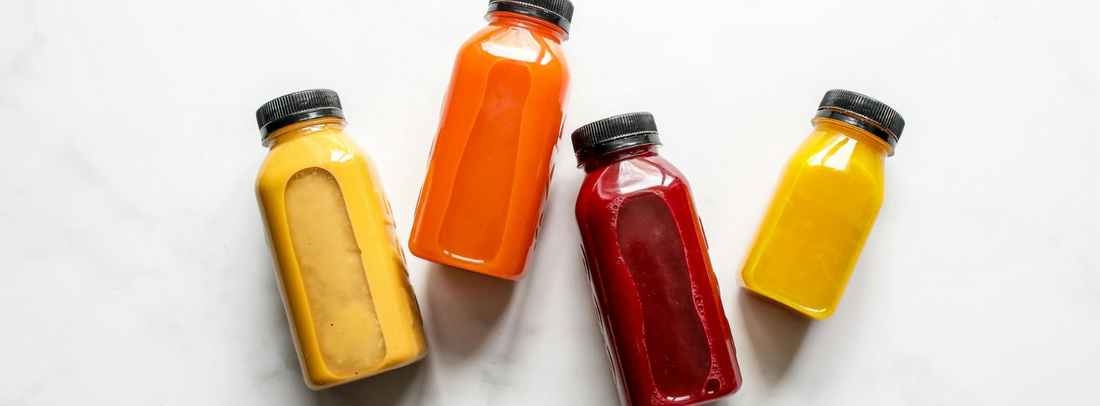Plastic bottles are an essential part of modern life, offering convenience and affordability. However, their environmental impact is a growing concern. To fully understand this issue, it's important to explore how plastic bottles are made. By examining the materials and production process, we can gain insights into the challenges of plastic waste and explore potential solutions.
- Alternatives to Plastic Bottles for Sustainable Practices
- Life Cycle of a Plastic Bottle: How Do Plastic Bottles Affect to Environment?
- Are Plastic Bottles Recyclable? 5 Facts of Plastic Bottle Recycling You Should Know
What Are Plastic Bottles Made Of?
Plastic bottles are primarily composed of polyethylene terephthalate (PET), a versatile polymer chosen for its unique combination of properties:
- High tensile strength – Ensures structural integrity, preventing breakage or deformation.
- Excellent barrier properties – Protects contents from oxygen, moisture, and contaminants, preserving quality and extending shelf life.
- Transparency – Allows clear visibility of the product, enhancing consumer appeal and facilitating quality inspection.
- Lightweight – Reduces transportation costs and environmental impact.
- Recyclability – PET is widely recycled, promoting sustainability and reducing waste by creating new bottles from recycled material.
Other plastics may be used for specific applications:
- Polyethylene (PE) – Used for milk and juice bottles due to heat resistance and durability.
- Polypropylene (PP) – Common for yogurt and syrup bottles due to its chemical resistance.
- Polycarbonate (PC) – Found in reusable water bottles for impact resistance and clarity, though its use is declining due to health concerns.
- Polyvinyl chloride (PVC) – Used for some oil bottles, but increasingly restricted due to environmental and health concerns.
The choice of plastic depends on factors like product type, regulatory requirements, and regional recycling infrastructure. As sustainability awareness grows, demand for recycled plastics, biodegradable materials, and eco-friendly packaging is increasing.
How Are Plastic Bottles Made?
The production of plastic bottles involves a detailed process that transforms raw materials into the containers we use daily. Below are the key stages:
1. Resin Production
- Raw Material Extraction – Petroleum-based hydrocarbons like crude oil and natural gas are extracted.
- Polymerization – Chemical reactions link molecules together to form polymer chains.
- PET Resin Formation – PET is created for its strength, clarity, and recyclability.
2. Pelletization
- Melting – The PET resin is heated and melted.
- Cutting – The molten polymer is extruded into strands, then cut into small pellets for easy transport and storage.
3. Preform Production
-
Injection Molding – Pellets are melted and injected into molds to form preforms, which are small, test-tube-like shapes of the final bottles.
4. Bottle Blowing
- Heating – Preforms are heated to soften the plastic.
- Stretching & Blowing – Heated preforms are placed in molds, and compressed air expands them into the desired bottle shape.
- Cooling – The shaped bottles are cooled to solidify their structure.
5. Finishing & Packaging
- Labeling – Labels provide product details, brand identity, and nutritional information.
- Packaging – Bottles are packaged for distribution in bulk or individual units.
While this process is efficient, it contributes to environmental issues. The next section explores the impact of plastic bottle production on our planet.

Environmental Impacts of Plastic Bottle Production
1. Fossil Fuel Consumption & Greenhouse Gas Emissions
- Raw Material Extraction – Producing plastic bottles relies heavily on fossil fuels, contributing to greenhouse gas emissions.
- Manufacturing Process – Energy-intensive processes like heating, molding, and transportation release carbon dioxide, driving climate change.
2. Water Usage
- Production Process – Manufacturing requires significant water resources for cooling and cleaning.
- Bottled Water Industry – Large-scale bottling operations consume vast amounts of water, often depleting freshwater sources.

3. Plastic Pollution
- Landfill Accumulation – Many plastic bottles end up in landfills, taking centuries to decompose.
- Ocean Pollution – Improper disposal leads to bottles entering oceans, harming marine life and ecosystems.
- Microplastic Pollution – Bottles degrade into tiny microplastics, which enter the food chain, posing risks to human health.
4. Chemical Pollution
- Manufacturing Chemicals – The plastic production process uses various chemicals that can be harmful if not properly managed.
- Additives – Plasticizers and colorants can leach into the environment, negatively affecting ecosystems.
To mitigate these environmental impacts, we must adopt sustainable practices such as reducing plastic consumption, increasing recycling efforts, and supporting eco-friendly alternatives.
Conclusion
Plastic bottles provide convenience but pose significant environmental challenges. Understanding their production process highlights the urgent need for sustainability. From fossil fuel consumption to plastic pollution, their production and disposal contribute to climate change and ecosystem harm.
To reduce these impacts, individuals and businesses must minimize plastic use, improve recycling systems, and support sustainable packaging innovations. By making informed choices, we can work toward a more environmentally responsible future.





